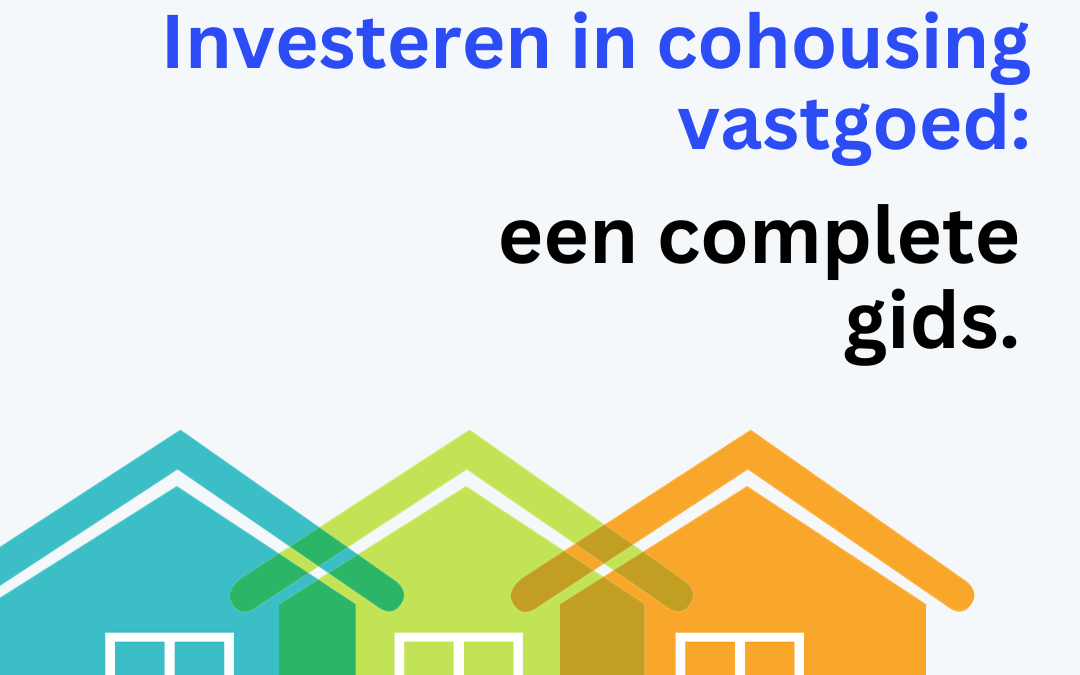Investment in real estate, especially cohousing, requires careful consideration of financing and budgeting. These elements are essential to maximise returns and minimise financial risks. In this article, we explore the key aspects of financing and budgeting when investing in cohousing, with concrete examples and advice from Immotokens, your property investment specialist.
Starting with a solid financial base
Equity and loans
The first step in financing a cohousing project is to determine the ratio of equity to borrowed capital. A significant contribution of equity can reduce reliance on loans and alleviate financial pressure.
Concrete example:
Suppose you want to invest in a cohousing project with a total cost estimate of €500,000. A sound financial strategy might be to finance 30% (€150,000) of the total amount from your own funds and borrow the remaining 70% (€350,000) through a mortgage.
The art of budgeting in cohousing projects
Cost estimate and contingencies
An accurate cost estimate is crucial. Apart from the purchase price and renovation costs, one must also take into account unforeseen expenses. A good rule of thumb is to set aside 10-15% of the total project cost for unexpected expenses.
Concrete example:
For the same cohousing project with a cost estimate of €500,000, sensible budgeting would involve setting aside €50,000 to €75,000 for contingencies.
Exploring funding opportunities
Mortgage loans and state aid
Besides traditional mortgage loans, investors can also benefit from government programmes and grants that support sustainable housing projects such as cohousing.
Concrete example:
In the Netherlands, there is an opportunity to get a loan with favourable terms through the National Mortgage Guarantee (NHG) to finance sustainable housing projects, including cohousing.
Risk management in finance
Diversification and liquidity reserves
Spreading investments and holding cash are fundamental risk management strategies. A diverse portfolio can mitigate the impact of local market fluctuations, and liquid reserves can help meet unexpected financial challenges.
Concrete example:
An investor with a portfolio of several cohousing projects in different cities has a better spread of risk than an investor who puts all his capital into one project. In addition, it is wise to keep at least six months of operating expenses in cash.
The role of property valuation
LTV ratio (Loan-to-Value)
When financing a cohousing project, the Loan-to-Value (LTV) ratio is an important indicator. It is the ratio of the loan to the value of the property. A lower LTV ratio can lead to more favourable loan terms.
Concrete example:
For a €500,000 cohousing project, if you take a €350,000 mortgage, your LTV ratio will be 70%. This is generally acceptable, but a lower ratio (e.g. 60%) may result in a lower interest rate.
The impact of interest rates and repayment schedules
Fixed versus variable interest rates
Choosing between a fixed and a floating interest rate can have a significant impact on the total cost of funding. A fixed rate offers stability, while a floating rate can offer opportunities when market rates fall.
Concrete example:
If the current fixed rate for a mortgage is 3%, but the floating rate starts at 2.5% and may fluctuate, you should weigh the market outlook and your own risk tolerance before making a decision.
Immotokens: Your guide in cohousing finance
Immotokens understands the complexities of financing and budgeting in cohousing projects. Our team of experts offers comprehensive advice and guidance to ensure your investments are optimally financed and budgeted.
By working with Immotokens, you can rely on our in-depth knowledge and experience to get the most out of your cohousing investments. Contact us today to optimise your cohousing financial strategy.
Conclusion
Financing and budgeting are the backbone of any successful cohousing investment. A thoughtful approach, paying attention to various funding sources, careful budgeting and risk management, can pave the way for profitable investments. With the support of Immotokens, you stand strong at every stage of your investment journey.



